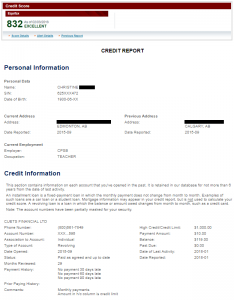I’ve been using this trick with people for a lot of years, but I realized we’ve never talked about it. It’s an inexpensive way to start building credit, to re-establish your credit, or to save a ton of money for people who can’t seem to save on their own.
Would you lend me $100 if I gave you the $100 cash for collateral? Of course – because there is no risk or downside, and your profit is the interest you’ll make from me on the loan. Credit unions do these so-called cash collateral loans, and a few of the banks do, too.
If you’re starting to build credit, it’s most likely you’ll do it with a credit card. But good credit is two years or more with a higher limit. A new card with a $500 limit gets you started, but it’s a tiny risk, thus a very small start to building credit.
Anyone who has had a bankruptcy also isn’t going to be able to borrow for at least three years or so. If you’re discharged from bankruptcy or have no credit, go to a credit union for one of these loans. It’s also in the Money Tools book chapter of: How to rebuild credit. Get a $2,000 loan set up over 12 or 18 months and give them the loan money as collateral. You’ll make the payments at a low interest rate and, at the end of the term, get the $2,000 released back to you. At that time, you’ll have a great start to a rebuilt credit record, and for a good-size amount of money (called high credit). The larger the loan, the more it will boost your credit rating. But you have to be able to make the payments – each and every month!
It also works the same with an RRSP loan but you need good credit to get one. By tax law, the lender can’t use the RRSP for collateral if you don’t pay.
These cash-collateral loans also work for the wealthy. You’d be amazed how many of them have the cash flow to make their payments, but don’t save. I had one person last year that was going to get an $8,000 a month whole life policy. It’s meant to give an insurance policy and build in an investment component, but it’s one of the worst financial product ever invented!
A term policy for his family was about $500 a month, and the other $7,500 payments towards a loan would get him the same $2 million insurance, and $200,000 cash in his hands at the end of a two-year loan!

